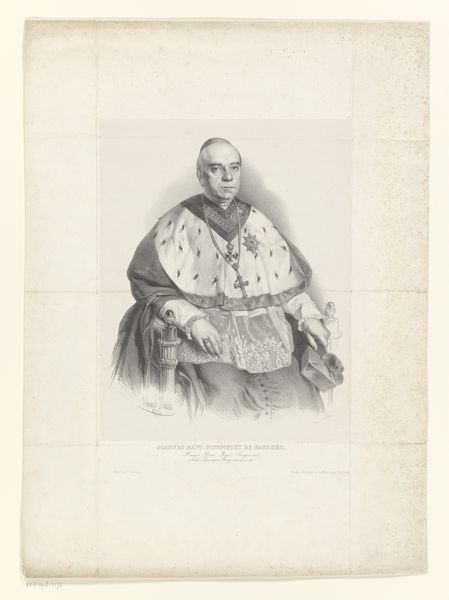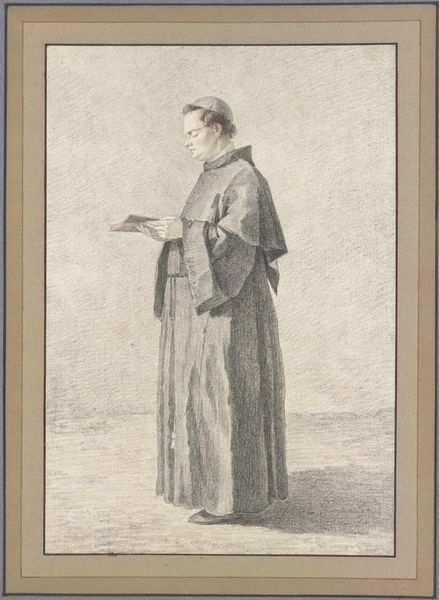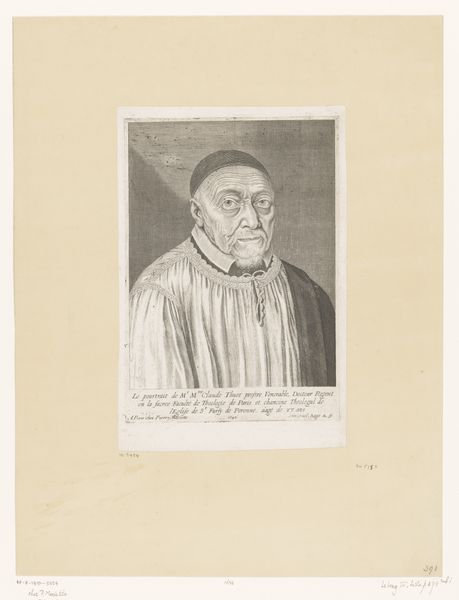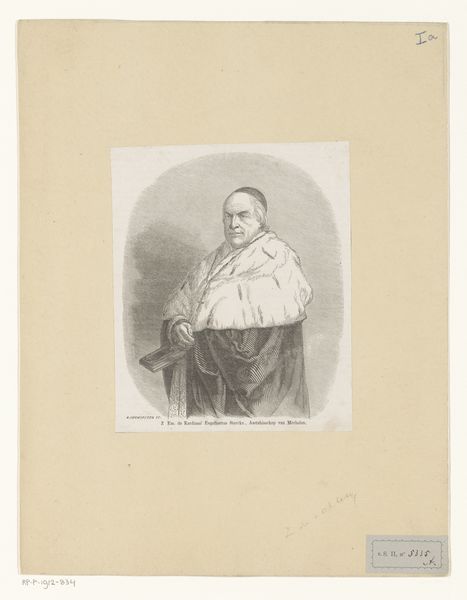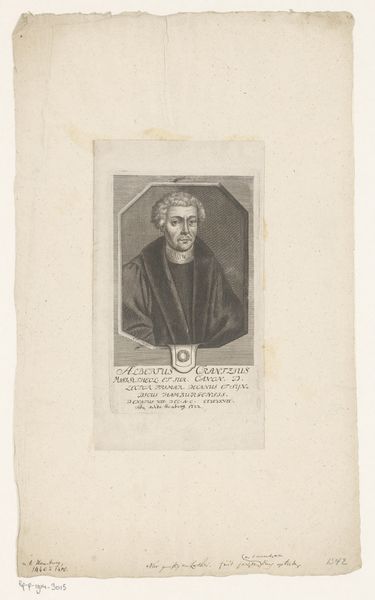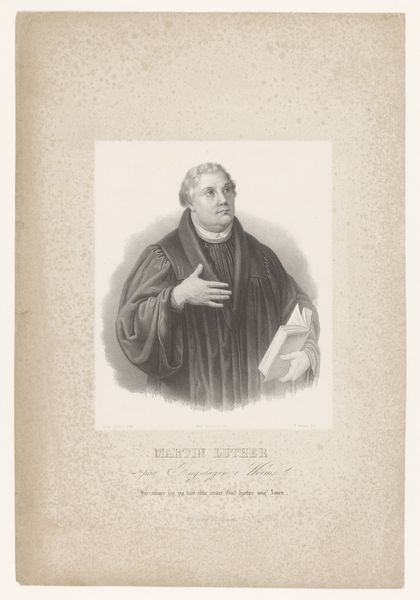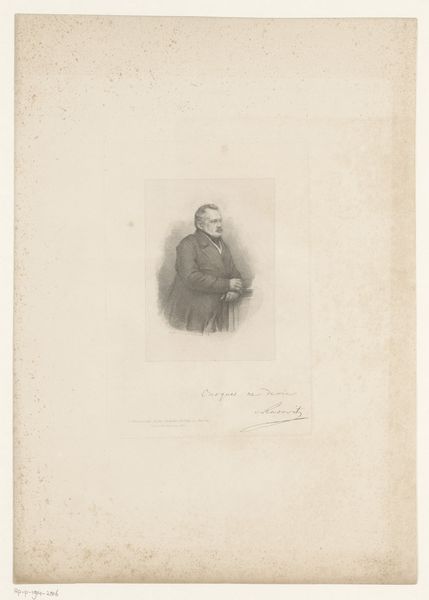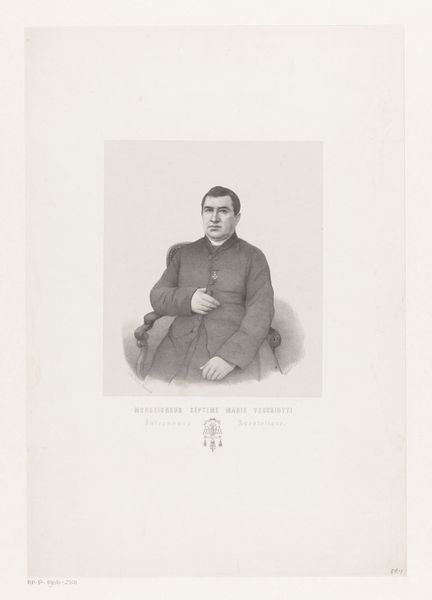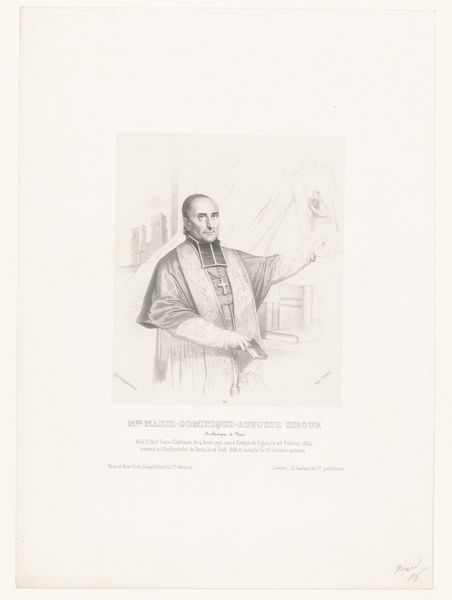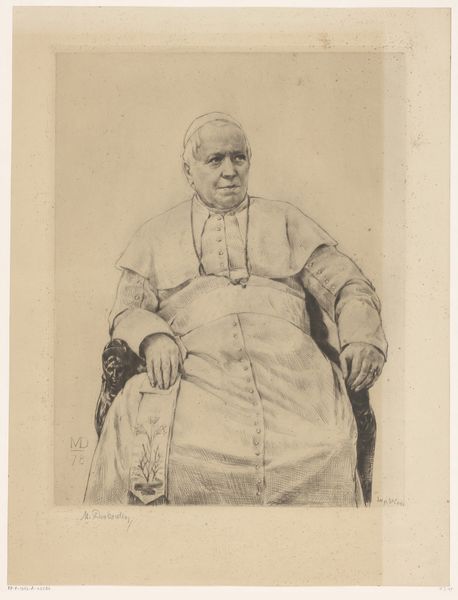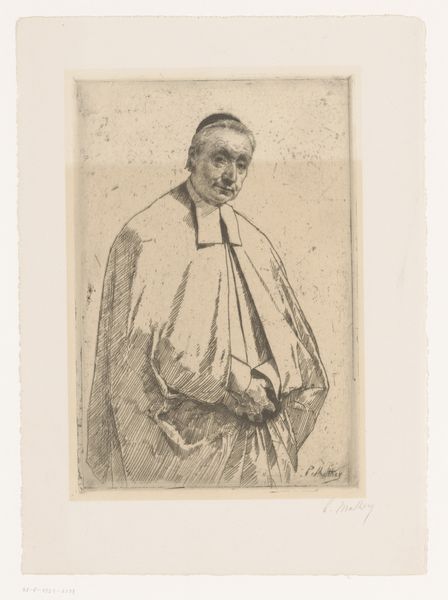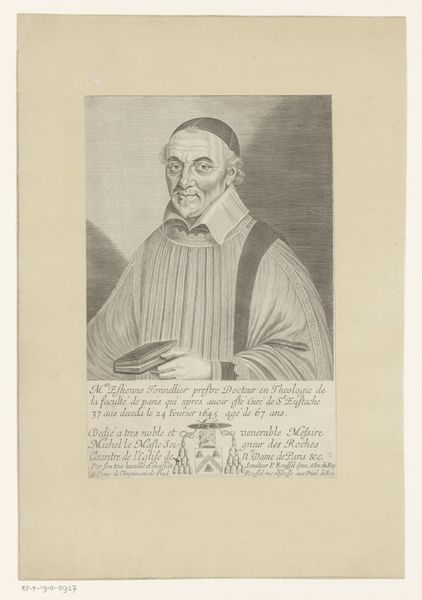
print, engraving
#
portrait
#
16_19th-century
# print
#
historical photography
#
academic-art
#
engraving
Dimensions: height 167 mm, width 127 mm
Copyright: Rijks Museum: Open Domain
Curator: Here we have an engraving entitled "Portret van Johannes Zwijsen," dating roughly between 1830 and 1906, created by Edouard Vermorcken. Editor: My immediate reaction is drawn to the somber tone. The stark contrast between light and shadow seems to carve out a powerful, almost imposing figure. It is also intriguing how the texture in this piece seems so carefully rendered despite being a print. Curator: It’s important to note that Johannes Zwijsen was a significant religious figure, serving as Archbishop of Utrecht during a turbulent period in Dutch religious history, navigating the re-establishment of the Catholic Church in the Netherlands and a difficult political landscape of religious and class discrimination. Editor: The composition guides the viewer’s eye directly to Zwijsen’s face, but it is interesting how his vestments also play such a crucial visual role. The careful arrangement of the sash, robe, and cross emphasizes order and formality, which speak to structure within institutions. Curator: Indeed. These vestments indicate his high office, while the artist attempts to render visible Zwijsen’s authority, not only as a religious leader, but also as an important negotiator between the Vatican and the Dutch government. It can also be seen, particularly from a queer perspective, as a highly codified, visible performance of authority, identity, and even, in its way, beauty. Editor: Looking at the medium itself – the fine lines of the engraving – do you think there might be a statement here about accessibility or about making this leader and his position more available to the masses? Curator: It's an interesting point to consider. The print medium democratizes the image. It allows for wider dissemination compared to, say, a unique painted portrait reserved for an elite audience. Print in itself can also be seen to offer new opportunities for disseminating progressive thought. Editor: Yes, it makes us reflect on how the artist utilizes contrast and form to evoke particular emotions. But also, context cannot be understated in contributing to one’s understanding and reading of art. Curator: Absolutely, and thinking about Vermorcken as a product of his time also helps reveal how visual arts function within power structures. Editor: On that note, let’s allow our audience the time and space to explore it further and reflect.
Comments
No comments
Be the first to comment and join the conversation on the ultimate creative platform.
